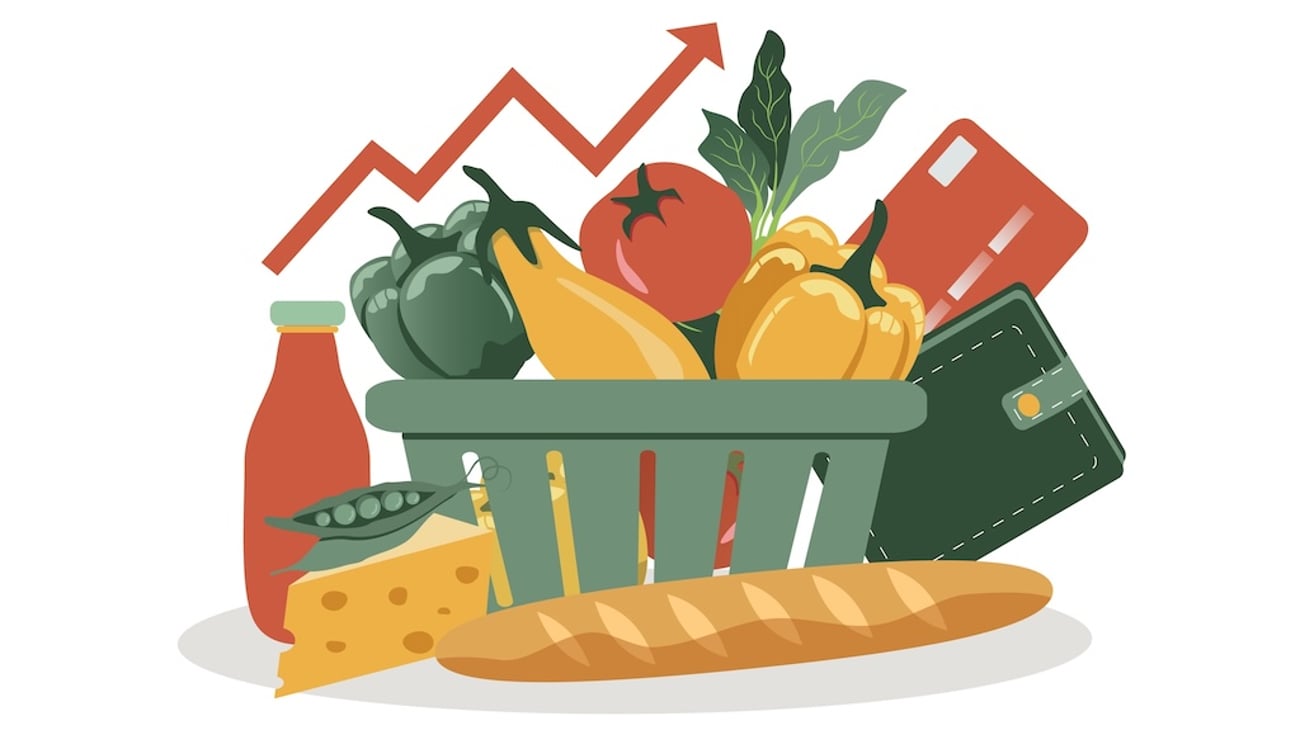Good news on the horizon for food inflation. Sort of
Once again, the numbers coming out of Statistics Canada were discouraging. Food inflation in the country was 8.8% in June, which is still higher than the general inflation rate. Everyone is affected by higher food prices. Americans learned last week that food inflation at the grocery store was 12.4%, a 41-year high. Despite all of this, consumers can see some light at the end of the long tunnel we’ve all been passing through in recent years.
First, we believe food inflation in Canada may have already peaked. Supply-chain challenges are still there, making the movement of goods more expensive, but things are slowly improving. Pandemic protocols around the globe are increasingly becoming predictable, which makes for much easier logistical planning. In February, the Russian invasion of Ukraine pushed commodity prices higher, making input costs an issue for most farmers and food manufacturers. But this seems to have stabilized as well. Markets are much calmer and, most importantly, more predictable. If nature continues to cooperate, Canada’s agricultural sector should see a strong harvest this year, helping to keep commodity prices lower and costs down. Again, more good news.
Since March, food sales at dollar stores have increased by 18%, according to NielsenIQ. Sales at discount stores have also increased by 5% during that period, so consumers are clearly trading down, and grocers know it. More discount store conversions are on the way in Canada. We have seen at least 15 new major discount stores in the country so far this year alone. Depending on the week, consumers can save anywhere between 25% to 40% at a discount store, compared to a regular grocery outlet. Something to consider.
But the Canadian Dairy Commission played party pooper by recommending an unprecedented second increase of 2.5% for September 1, just as schools open in the fall. This comes after a record 8.4% hike in February. As a result, the price of butter is up almost 20% since December. In some markets, fluid milk is 25% more expensive than last winter. The 2.5% at the farm will look more like a six to 10% at retail, for all consumers. As prices stabilize in most sections of the grocery store, dairy will continue to be the exception for a while.
To add insult to injury, we also learned last week that executives at the Canadian Dairy Commission received bonuses last year, and these are federal employees. The Crown corporation refused to disclose amounts or reasons that bonuses were given. There’s nothing wrong with bonuses, but the lack of transparency is simply unacceptable. Taxpayers and consumers deserve better. Our quota system was designed to make our dairy sector immune to inflationary cycles. Something is not working.
Interest rates are also going up. Last week, the Bank of Canada made an almost unprecedented move, delivering a jolt to consumers everywhere, by raising its benchmark interest rate a full percentage point. This is the biggest one-time increase in 24 years. Since the announcement, mortgage brokers have been busy. For many households, the cost of shelter spiked, making it harder to spend on anything else. But food is a necessity. Before the interest-rate hikes, the market was flooded with cash, and some consumers had no qualms about paying $28 for a T-bone steak. This obviously contributed to higher prices in our economy, including at the grocery store, especially for premium products and categories. Well, since fewer people can now afford a $28 T-bone, we are expecting some prices to soften or even drop a little. Simple food economics.
With higher rates though, our Canadian dollar will gain strength against the American greenback, making imports cheaper. And we do import many food products. This is likely going to help consumers who purchase centre-of-the-store dry goods, prices of which have recently skyrocketed. But the American Federal Reserve is also planning another rate increase, which could put pressure on our dollar. Higher rates are bad news for mortgage owners, but good news for imports. Interesting times.
Overall, we should not expect prices to drop anytime soon, year to year, but the rate at which food prices are rising is slowing down. Food inflation is critical for our food economy, but a 10% rate is just not sustainable. As predicted in December of last year by Canada’s Food Price Report 2022, we should end the year at about 7%, as forecasted, unless some other geopolitical crisis occurs. This is still high, but it’s not 10%.




